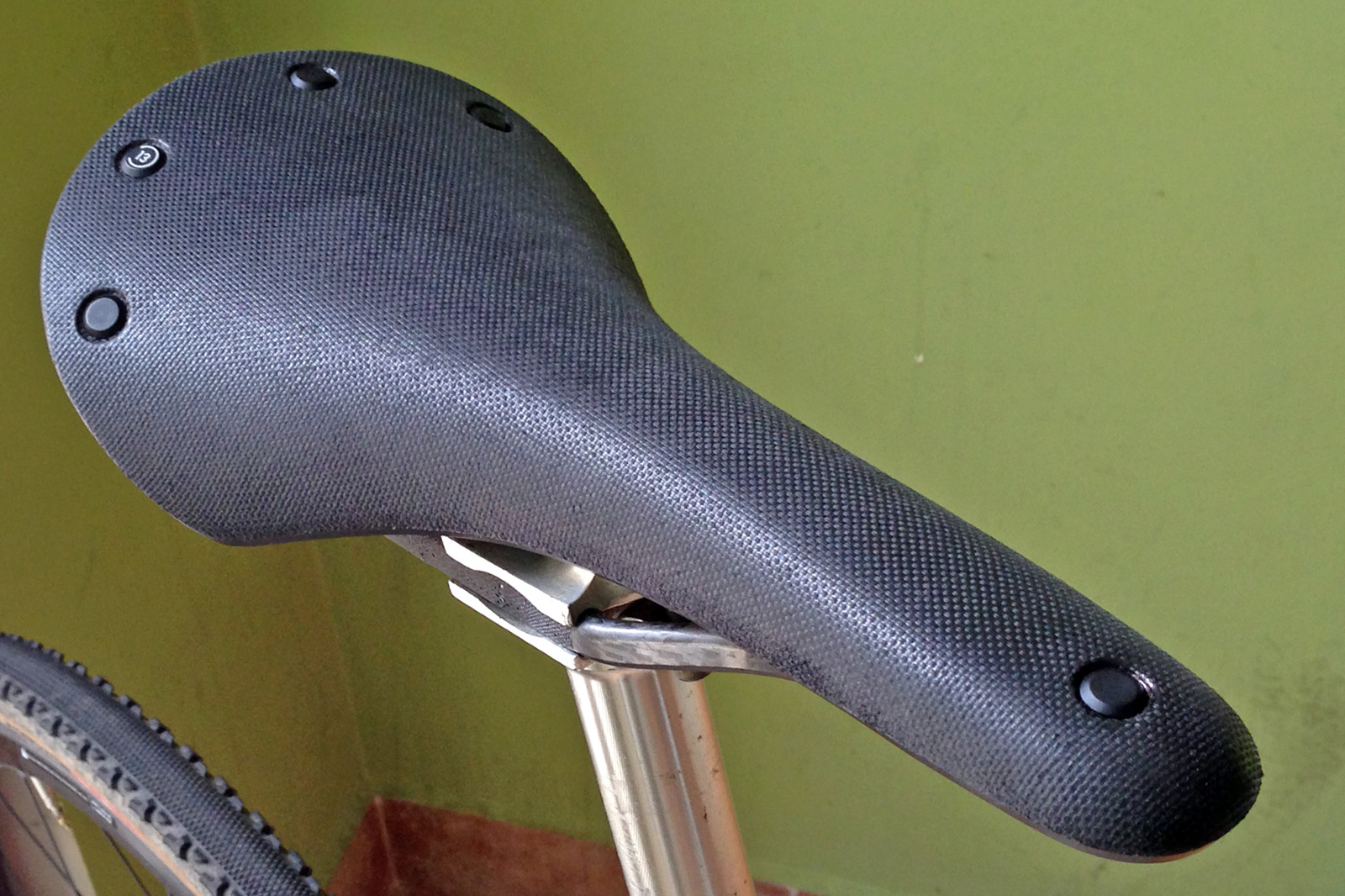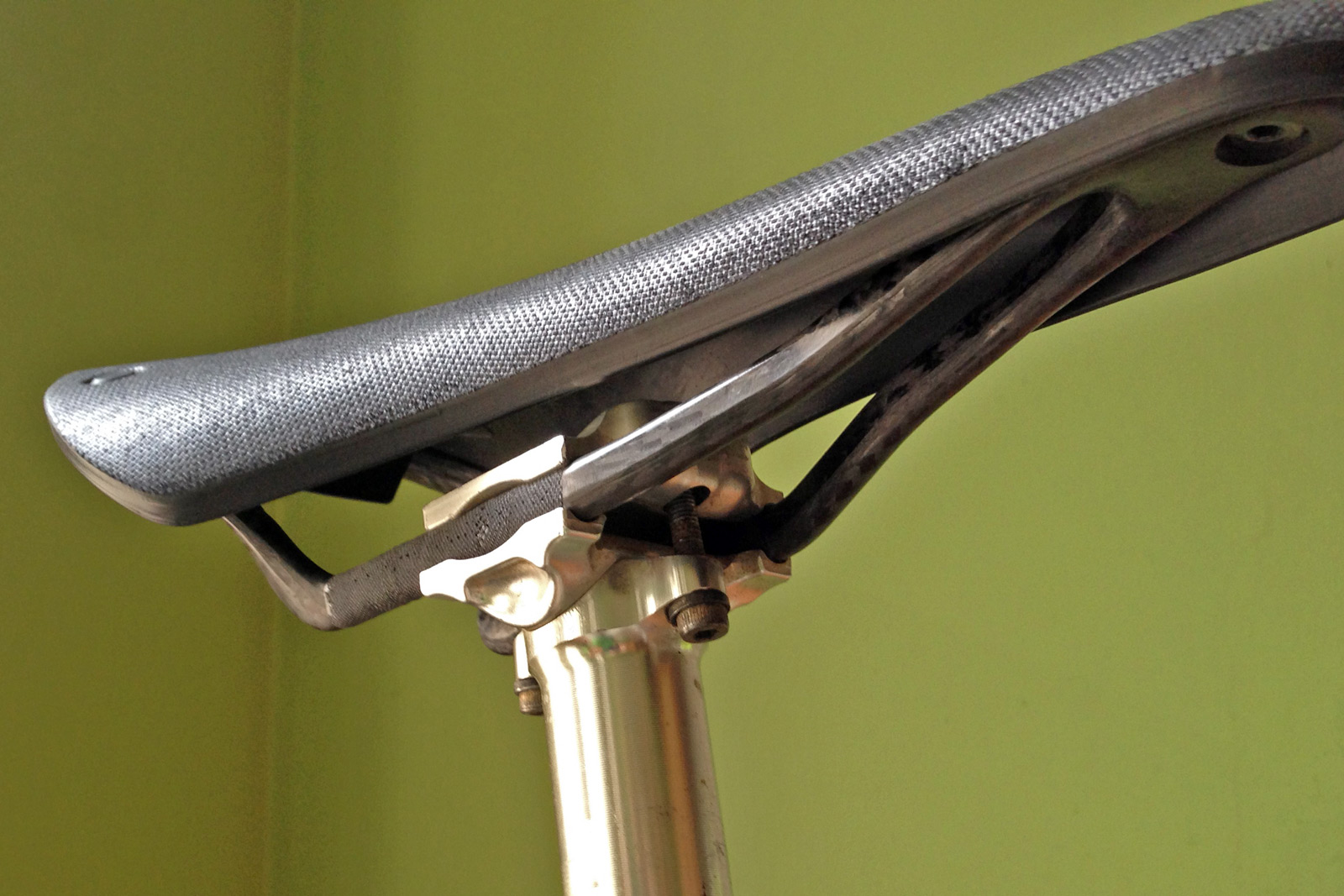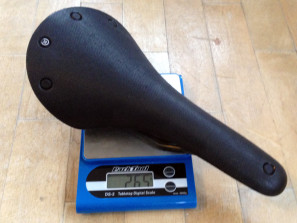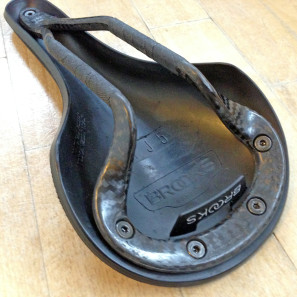At the end of the summer, just before and during Eurobike, we previewed a carbon-railed saddle from Brooks, a pretty dramatic move for them. The new Cambium C13 builds on the other vulcanized rubber and cotton topped saddles in their Cambium range, but ditches the aluminum structure and steel rails to shave off more than 100g from their next lightest saddle. We’ve apparently been added to the pool of early testers, so one of the new narrow saddles showed up on our doorstep this week. I’ve thrown it on a cross bike that I’m getting around town on this week and already have some thoughts on the new perch…
Brooks sells the Cambium line on the idea of comfort, flexibility, and that they are ready to ride out of the box, unlike their leather saddles which require a real break-in period. With the C17 that means an incredibly comfortable, yet still supportive feel as the rubber kind of hangs between the aluminum structure at the nose and tail of the saddle. I haven’t sat on the narrower C15, so was really curious to see how that feel translated into the again narrower C13 with its carbon undercarriage.
Not entirely sure what to expect then, when I hopped on the saddle for the first ride, my immediate thoughts were actually how stiff it was. The saddle has a quite long nose that stays relatively thin and narrow through the mid section and a rear that is just about 130mm wide, with the widest point about 2cm in front of the outside rivet. Since the saddle top is quite narrow (modeled after the B17 narrow), my sit bones tended to want to rest between this widest point up to sitting over the rivets themselves, so there isn’t really much room to allow the saddle to flex where it is supporting my weight. Add in the fact that the single looped carbon rail seems very rigid and the stiff feel of the saddle isn’t so surprising.
This rigid feel leans towards that of saddles with carbon rails and shells, but doesn’t seem to really take full advantage of the flexibility that is a trademark of the rubber Cambium line-up. Important to note of course, is that this is a test period for Brooks, and we are beta testers on a product that is not yet ready to hit the market. I’ve spoken with Brooks, and they have reiterated the test phase nature and said that they do intend to release the C13 in several variations, including with differing rubber densities to address this personal stiffness feel. They went through the same beta process when they introduced the C15 and apparently really did take test rider feedback into consideration to make final tweaks before the production models were released, and anticipate the same process here. In our conversations with Brooks about the C13’s feel, they also hinted at using this new stiff carbon rail setup with varying width Cambium saddles in the near future as well, which will likely add even more comfort while still benefiting from the weight reductions.
The texture of the top also carries over from the other Cambium saddles. While it starts out as a soft cotton, when it gets imbedded in rubber and vulcanized it takes on a harder quality, to the point that I could feel the texture when commuting with a regular pair of pants on. I haven’t given it enough time to see if it is as abrasive as prior models, but I didn’t slide around at all on the cover, so clearly there is some friction going on with the top.
Our C13 sample weighed 265g, which while light for a Brooks saddle, still is a solid 100g more that a similarly shaped, carbon-railed saddle with a more traditional lightweight construction. The nose and mid-section of the saddle have a good bit of flexibility, but the fairly stiff rubber of the top still offers a good bit of support. When pedaling, the edges of the saddle flex up and down with the movement of the legs, without feeling like the saddle is moving around underneath you. But seat your sit bones near those aluminum rivets along the back and the rigid underlying carbon rail translates all of this solid support into a stiff ride. We’ll have to wait and see if product versions remain so stiff.



